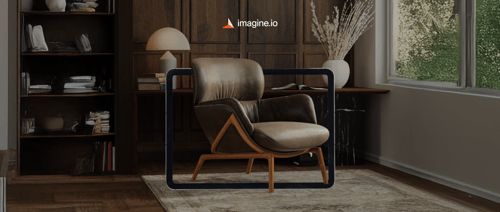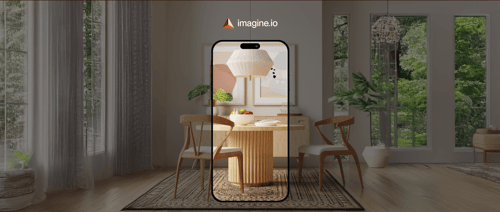A single outdated product image can unravel customer trust, inflate return rates, and erode brand credibility. Picture a home décor brand unveiling a new line of customizable rugs, only to have their online catalog display a discontinued pattern. The fallout? Frustrated shoppers, lost sales, and a tarnished reputation. Retailers in fast-paced markets like furniture, appliances, and consumer goods face relentless pressure to keep visuals fresh amid shifting inventories and customer demands for personalization. Enter configuration-driven imagery, a transformative technology that ensures product catalogs remain accurate, vibrant, and instantly adaptable, revolutionizing how brands connect with buyers.
The Imperative of Up-to-Date Catalogs
E-commerce hinges on trust. When a customer clicks “buy,” they expect the product to match the image down to the exact shade of walnut or the precise texture of linen. Yet traditional photography, with its cumbersome logistics and weeks-long production cycles, struggles to keep up with industries where trends shift overnight. In vibrant hubs like New York, Los Angeles, and Austin, where consumer preferences evolve rapidly, outdated visuals are more than an inconvenience they're a competitive disadvantage. Configuration-driven imagery offers a dynamic solution, syncing product visuals with real-time data to deliver what customers expect: accuracy.
For brands operating across the United States and Canada, the challenge is even steeper. Regional preferences say, bold colors in Las Vegas or minimalist designs in Chicago demand localized visuals. Static images can't scale to meet these needs. A platform like imagine.io, with its cloud-based rendering, produces photorealistic visuals in minutes, rivaling the quality of a professional photoshoot. Internal studies reveal that even e-commerce leaders can't distinguish imagine.io's outputs from traditional photos, proving that speed and quality can coexist.
A Digital-First Retail Revolution
The retail landscape is shifting decisively toward digital-first experiences. Brands like Ruggable and KitchenAid are reimagining product presentation to meet rising consumer expectations. A recent market analysis underscores this trend, noting that the global visual product configurator software market is poised for robust growth, propelled by demand for tailored consumer products and seamless digital experiences. Sectors like home décor and furniture are at the forefront, leveraging AI and AR/VR to deliver immersive, personalized shopping journeys that boost customer satisfaction and conversion rates.
What's driving this surge? Shoppers crave customization. They want to visualize a sofa in sage green or a ceiling fan in brushed nickel before committing. Configuration-driven imagery meets this demand by drawing from a centralized 3D asset library and applying real-time product data colors, finishes, sizes to generate tailored visuals instantly. Unlike competitors who focus narrowly on one format, imagine.io's platform delivers a full spectrum of assets: images, videos, 360-degree views, and interactive configurators. This versatility empowers brands like King Koil and Hunter Fan to create cohesive, engaging product experiences across platforms like Instagram and YouTube.
The Mechanics of Dynamic Imagery
Configuration-driven imagery is built on flexibility. Start with a 3D model say, a modular sectional sofa. Define its variables: fabric type, color, configuration. An automated rendering engine, like imagine.io's, then generates photorealistic images for every permutation, updating instantly when a new option is added or an old one discontinued. No studio, no photographer, no cross-country sample shipments. This streamlined process is a lifeline for brands like PepsiCo, managing diverse packaging, or Kohler, with its array of customizable fixtures.
The speed and scale are unmatched. Retailers in Dallas or High Point, dealing with high-volume catalogs, can produce thousands of assets in minutes. While some prospects question imagine.io's subscription model preferring project-based pricing the platform's unlimited image generation offers unmatched value for brands with complex SKUs. This efficiency is why the technology is gaining traction in markets where agility is paramount.
Real-World Impact: Efficiency in Action
Consider a furniture retailer that cut photography costs by 90% using configurable renders. When a fabric option changed, they didn't need to reschedule a shoot they simply updated the 3D model, and new visuals were ready in hours. An appliance brand slashed catalog update times from weeks to mere hours when a new finish rolled out. A home décor company kept its catalog fresh by swapping seasonal backgrounds without reshooting core products, saving both time and budget.
These outcomes resonate with brands like Sinomax USA and Serta Simmons, who rely on configuration-driven tools to stay nimble. The technology also aligns with broader industry trends toward sustainability, as noted in the market analysis. By reducing the need for physical samples and wasteful shoots, brands contribute to eco-friendly practices, a priority in today's regulatory landscape. This is particularly relevant for industries like home décor, where sustainability initiatives are driving adoption of visual configurators.
Overcoming the Hurdles
Adopting configuration-driven imagery isn't without challenges. Creating a high-quality 3D model library demands upfront investment in expertise and time, which can intimidate brands accustomed to traditional agency workflows. Data integration poses another obstacle: product information must be standardized and accurate to sync with rendering rules. Maintaining photorealistic quality across configurations requires meticulous oversight. Some prospects hesitate over imagine.io's custom pricing, which, unlike competitor's fixed models, tailors costs to each client's needs. Others note that imagine.io isn't part of their established agency pool. Yet, the long-term gains faster workflows, reduced costs, and enhanced customer trust often tip the scales.
Driving Efficiency and Trust
The benefits extend far beyond the catalog itself. Faster refresh cycles ensure promotions launch on schedule, not weeks late. Accurate, personalized visuals reduce returns and boost conversions by aligning with customer expectations. Global scalability allows brands to adapt imagery for regional markets like Canada or Las Vegas without starting from scratch. On social platforms like LinkedIn and Facebook, where fresh, engaging content is king, configuration-driven imagery delivers tailored assets that capture attention whether it's a sleek video for YouTube or a dynamic configurator for Instagram.
Sustainability is another win. By minimizing physical shoots, brands reduce their environmental footprint, aligning with the eco-conscious values of today's shoppers. The market analysis highlights how regulatory shifts are pushing businesses toward greener practices, making tools like imagine.io not just innovative but essential.
The Future of Ever-Current Catalogs
Configuration-driven imagery is poised to redefine e-commerce. The market analysis predicts that AI and AR/VR advancements will make these tools indispensable, enabling predictive visuals based on shopper behavior and immersive AR experiences where customers “place” products in their homes. For brands in competitive markets like Chicago or New York, investing in platforms like imagine.io is no longer a luxury it's a necessity. As retail accelerates, those who embrace dynamic imagery will lead the pack, delivering catalogs that are always current, always compelling, and always ready to meet the moment.
Frequently Asked Questions
What is configuration-driven imagery and how does it work for e-commerce catalogs?
Configuration-driven imagery is a technology that automatically generates photorealistic product visuals by combining 3D models with real-time product data like colors, finishes, and sizes. Instead of traditional photography, brands create a centralized 3D asset library and use automated rendering engines to produce thousands of product images, videos, and 360-degree views in minutes. This allows e-commerce catalogs to stay current with inventory changes and customer customization options without costly photo shoots.
How much can businesses save by switching from traditional product photography to configuration-driven imagery?
Businesses can achieve significant cost savings, with some furniture retailers cutting photography costs by 90% using configurable renders. Beyond direct savings, brands eliminate expenses related to studio rentals, photographer fees, sample shipping, and lengthy production cycles. When product changes occur, companies can update visuals in hours rather than weeks, avoiding the costs of rescheduling shoots and missing promotional deadlines.
What are the main challenges of implementing configuration-driven imagery for product catalogs?
The primary challenges include the upfront investment in creating high-quality 3D model libraries, which requires specialized expertise and time. Data integration can be complex, as product information must be standardized and accurate to sync properly with rendering systems. Maintaining photorealistic quality across all product configurations requires careful oversight and quality control. However, the long-term benefits of faster workflows, reduced costs, and improved customer trust typically outweigh these initial implementation hurdles.
Disclaimer: The above helpful resources content contains personal opinions and experiences. The information provided is for general knowledge and does not constitute professional advice.
You may also be interested in: Imagine.io | Award Winning 3D + AI Product Visualization
Struggling with expensive, outdated product visuals that slow down your creative process and stunt eCommerce growth? imagine.io's AI-powered platform empowers furniture, home décor, and textile brands to effortlessly produce striking 3D images, immersive videos, AR experiences, and interactive configurators. Cut production costs up to 70%, boost conversions 5X, speed up prototyping, and supercharge your online sales. Ready to elevate your product visuals and captivate customers? Book a demo with imagine.io today!
Powered by flareAI.co




.png?width=500&name=How%20to%20Add%20a%203D%20Product%20Configurator%20to%20Your%20WordPress%20Website%20(Complete%20B2B%20Guide).png)
















%20(1).png?width=500&name=Why%20Exploded%20Mattress%20Views%20Matter%20(And%20How%20to%20Generate%20Them)%20(1).png)
.png?width=500&name=Best%20Shopify%20Product%20Configurator_%20How%20to%20Choose%20the%20Right%20One%20(2).png)
.png?width=500&name=Why%20Exploded%20Mattress%20Views%20Matter%20(And%20How%20to%20Generate%20Them).png)



.png?width=500&name=Best%20Shopify%20Product%20Configurator_%20How%20to%20Choose%20the%20Right%20One%20(1).png)







.png?width=500&name=How%203D%20Rendering%20Can%20Make%20or%20Break%20Your%20Industrial%20Design%20Pitch%20(1).png)








%20with%20Digital%20Twins%20and%203D%20Visualization.png?width=500&name=Optimizing%20Your%20Digital%20Asset%20Management%20(DAM)%20with%20Digital%20Twins%20and%203D%20Visualization.png)




.png?width=500&name=Styling%20Home%20Decor%20for%202025_%20From%20Global%20Influences%20to%20Playful%20Personalization%20(1).png)
